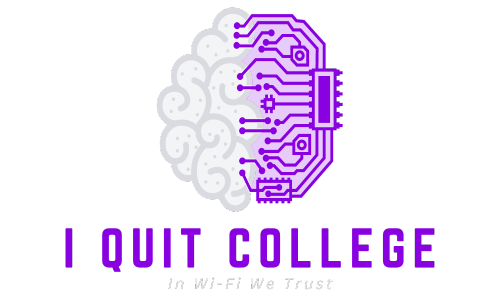As a small business owner or manager, it’s crucial to establish a strong hiring process to build a team that can impress customers and contribute to the success of your business. Effective hiring strategies are essential for attracting top talent and optimizing the recruitment process. This article will provide valuable insights on talent acquisition techniques and offer practical tips for small businesses to enhance their hiring efforts.
Key Takeaways:
- Emphasize employer branding to showcase your small business as a great company to work for.
- Write clear and compelling job descriptions that accurately reflect the role and requirements.
- Expand your reach and attract qualified candidates through diversified job posting strategies and networking.
- Utilize technology, such as applicant tracking software, to improve the efficiency of the hiring process.
- Train your team on hiring best practices and streamline the decision-making process for faster outcomes.
Emphasize Your Employer Branding
Employer branding is a critical factor in attracting and retaining top talent, especially for small businesses that may have less name recognition in the market. By cultivating a strong employer brand, small businesses can position themselves as desirable companies to work for, even in the face of competition from larger organizations.
One key aspect of employer branding is establishing and promoting a unique company culture. Highlighting your company’s values, mission, and work environment can help create a compelling narrative that resonates with potential candidates. A strong company culture not only attracts talented individuals but also fosters employee engagement and satisfaction.
Another effective way to emphasize your employer brand is by incorporating employee testimonials. Providing real-life accounts of the positive experiences your employees have had working for your small business can significantly impact candidates’ perceptions. These testimonials can highlight the work-life balance, growth opportunities, and supportive team dynamics that make your company an attractive place to work.
In today’s digital age, leveraging social media and other online platforms is essential for showcasing your employer brand. Create engaging and informative content that reflects your small business’s values and work environment. Regularly post updates about company events, philanthropic initiatives, and employee achievements to demonstrate your commitment to employee satisfaction and community involvement.
Investing in your employer brand can pay off in the long run by attracting top talent and creating a positive perception of your small business as a great place to work.
To effectively manage and maintain your employer brand consistency, consider the following strategies:
- Ensure your job postings reflect your employer brand by consistently using language and tone that aligns with your company culture and values.
- Provide clear and comprehensive job descriptions that accurately describe the role, responsibilities, and requirements. Transparency is key to attracting candidates who are the right fit for your small business.
- Regularly revisit and update your employer brand messaging. As your small business evolves, your employer brand should adapt to reflect any changes in values, goals, or company culture.
By highlighting your unique employer brand, you can differentiate your small business from competitors and attract qualified candidates who are aligned with your company’s values and goals. Investing time and effort into employer branding can ultimately lead to building a talented and dedicated team that contributes to the long-term success of your small business.
Write Effective Job Descriptions
Clear and compelling job descriptions are essential for attracting qualified candidates and making the right hire for your small business. A well-written job description serves as a valuable communication tool between your company and potential candidates, outlining the role, responsibilities, and requirements.
To create job descriptions that stand out and resonate with qualified candidates, consider the following practical tips:
- Begin with a captivating introduction: Start your job description with a brief overview that highlights the unique aspects of your company and the role. This will grab the attention of potential candidates and give them a glimpse into why they should be interested in joining your team.
- Clearly outline job requirements: Be specific about the skills, qualifications, and experience necessary for the position. This will help candidates self-assess their suitability and ensure that only qualified individuals apply.
- Highlight the benefits of joining your small business: In addition to job requirements, emphasize the advantages of working for your company. Showcase your employer brand and the unique opportunities, perks, and culture that set your small business apart.
- Use concise and easy-to-understand language: Avoid jargon or overly technical terms that may alienate potential candidates. Keep the language clear and straightforward, using bullet points or short paragraphs to improve readability.
- Include essential responsibilities and expectations: Provide a detailed breakdown of the main responsibilities and expectations for the role. This will help candidates understand the day-to-day requirements and envision themselves in the position.
- Encourage applicants to showcase their skills: Invite candidates to demonstrate their abilities by including a brief task or challenge as part of the application process. This will help you assess their suitability and commitment to the role.
Remember to incorporate your employer brand into job descriptions. Highlight what makes your small business a great place to work and showcase the unique opportunities you offer. A strong employer brand not only attracts qualified candidates but also helps ensure cultural fit with the company.
Example Job Description
| Job Title: | Marketing Specialist |
|---|---|
| Company: | XYZ Marketing Solutions |
| Location: | Anytown, USA |
| Job Type: | Full-Time |
| Job Responsibilities: |
|
| Job Requirements: |
|
| Benefits: |
|
By incorporating these tips into your job descriptions, you can attract qualified candidates who align with your small business and increase the likelihood of making successful hires.

Reach Qualified Candidates
When it comes to finding the right candidates for your small business, reaching qualified individuals can be a significant challenge. In this section, we will explore various strategies that can help you maximize your reach and attract top talent to your organization.
Diversify Your Job Posting Strategy
One of the key aspects of reaching qualified candidates is to diversify your job posting strategy. Instead of relying solely on a single job board, consider utilizing multiple job boards that cater to your industry or target audience. By doing so, you can increase your chances of reaching a broader pool of qualified candidates.
Furthermore, it’s important to incorporate relevant keywords in your job postings. This can help improve the visibility of your job postings on search engines and job board platforms, making it easier for qualified candidates to find and apply to your openings.
Leverage Your Network and Attend Networking Events
Networking plays a crucial role in the hiring process. Reach out to your professional network and inform them about your open positions. They may be able to refer qualified candidates or provide recommendations for other networking opportunities.
Additionally, consider attending job fairs and networking events related to your industry. These events provide valuable opportunities to connect with potential candidates and establish relationships that can lead to future hires for your organization.
Implement Employee Referral Programs
Your current employees can be a valuable source of qualified candidates. Implementing an employee referral program can incentivize your employees to refer individuals from their network who they believe would be a good fit for your organization. This not only helps you reach qualified candidates but also strengthens employee engagement and loyalty.
Build a Talent Pipeline
Building a talent pipeline is a proactive strategy for reaching qualified candidates ahead of time. By identifying individuals who possess the skills and qualifications you are looking for, you can establish relationships and keep them engaged with your organization. This way, when a suitable position opens up, you already have a pool of qualified candidates to consider.
Remember, reaching qualified candidates requires a multi-faceted approach. By diversifying your job posting strategy, leveraging your network, implementing employee referral programs, and building a talent pipeline, you can increase your chances of attracting top talent to your small business.

Use Technology to Improve Efficiency
In today’s digital age, leveraging hiring technology is crucial for small businesses looking to streamline their recruitment process and boost efficiency. By implementing applicant tracking software (ATS) and other automation tools, small businesses can save time, enhance resume screening, and optimize their hiring process. Let’s explore the key benefits of leveraging technology for recruitment efficiency:
1. Enhanced Resume Screening
With applicant tracking software, small businesses can efficiently screen and filter resumes to identify the most qualified candidates. ATS uses algorithms to analyze resumes based on specific keywords, skills, and experience, saving recruiters significant time and effort. By automating this initial screening process, small businesses can focus their attention on reviewing the most promising candidates.
2. Streamlined Application Management
Applicant tracking software allows small businesses to centralize and organize applications in one system, making it easier to manage and track candidate information. Recruiters can quickly access resumes, cover letters, and other documents, facilitating a smoother hiring workflow. Moreover, ATS can automatically send emails to candidates, schedule interviews, and generate reports, eliminating manual administrative tasks and improving overall efficiency.
3. Automation of Hiring Processes
Hiring process automation enables small businesses to automate repetitive tasks and minimize manual efforts. For instance, ATS can automatically send personalized email responses to candidates, reducing the time spent on email correspondence. Additionally, automation tools can assist with scheduling interviews, performing background checks, and issuing offer letters. By automating these processes, small businesses can save time and ensure a consistent and efficient hiring experience.
Implementing applicant tracking software can significantly improve the efficiency of your small business’s hiring process. It streamlines resume screening, simplifies application management, and automates various hiring tasks, saving time and enhancing recruitment efficiency.
4. Improved Collaboration and Communication
Technology also facilitates seamless collaboration and communication among hiring teams. With cloud-based applicant tracking systems, multiple recruiters can access and update candidate information in real-time. This enhances teamwork, eliminates data duplication, and ensures everyone is on the same page throughout the hiring process. Collaborative features, such as shared comments and evaluation tools, further enhance communication and enable better-informed hiring decisions.
5. Data-Driven Insights
Hiring technology provides small businesses with valuable data and analytics that can drive recruitment strategies. Applicant tracking software generates reports on key metrics, such as time-to-hire, source of hire, and candidate quality, allowing businesses to optimize their hiring process based on real-time insights. By leveraging these data-driven insights, small businesses can continually improve their recruitment strategies and make data-backed decisions.
Incorporating hiring technology into your small business’s recruitment process can significantly improve efficiency, reduce manual effort, and enhance overall recruitment outcomes. By leveraging applicant tracking software, small businesses can streamline resume screening, automate hiring tasks, improve collaboration, and gain valuable insights to make data-backed hiring decisions.
Next, we’ll explore how training your team on hiring best practices can further optimize your recruitment efforts.
Conclusion
Implementing effective hiring strategies is crucial for small businesses looking to build a winning team. This article has provided valuable insights and practical tips for small business owners and managers to attract top talent and create a dynamic and successful team.
By emphasizing employer branding, writing compelling job descriptions, and reaching out to qualified candidates, small businesses can optimize their talent acquisition efforts. Leveraging technology, such as applicant tracking software, can significantly improve efficiency in the recruitment process and save valuable time.
Training your team on hiring best practices and streamlining the decision-making process are essential for making successful hires. By incorporating these talent acquisition best practices, small businesses can gain a competitive edge in the market, attract the right candidates, and drive overall success.






